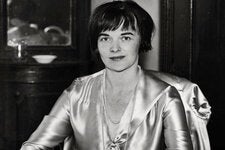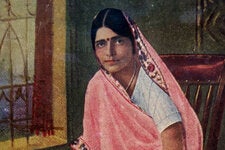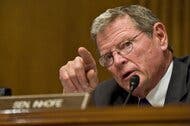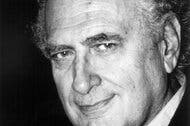Ruth Westheimer, the Sex Guru Known as Dr. Ruth, Dies at 96
Frank and funny, the taboo-breaking psychologist said things on television and radio that would have been shocking coming from almost anyone else.
By

Frank and funny, the taboo-breaking psychologist said things on television and radio that would have been shocking coming from almost anyone else.
By

Inspired by Renaissance painters, he explored life’s passages — birth, death, romantic love, redemption and rebirth — in often moving, often thrilling exhibitions.
By

Her career unfolded in three phases: as the creator of costumes for movies like “Chinatown,” as a studio executive and as a producer, largely with her friend Goldie Hawn.
By

She was married to John Belushi until his fatal drug overdose in 1982. She went on to celebrate his comic talent in books and a documentary.
By

Shelley Duvall, Star of ‘The Shining’ and ‘Nashville,’ Dies at 75
Her lithesome features and quirky screen presence made her a popular figure in 1970s movies, particularly Robert Altman’s.
By

Dorothy Lichtenstein, Philanthropist and a Rare ‘Artist’s Widow,’ Dies at 84
A gregarious yet humble co-founder of the Roy Lichtenstein Foundation, she donated more than 1,000 of her husband’s works, notably to the Whitney Museum.
By

Dylcia Pagan, Imprisoned Puerto Rican Nationalist, Is Dead at 77
She was among 10 members of the terrorist group F.A.L.N. who were convicted on arms and conspiracy charges in 1981. President Bill Clinton granted her clemency.
By

Dan Collins, 80, Author Who Rejected View of Giuliani as a 9/11 Hero, Dies
A muckraking journalist, he helped write a revisionist account of Rudolph Giuliani’s role as mayor before and after the terrorist attacks.
By

Hattie Wiener, Sex-Positive ‘Oldest Cougar,’ Dies at 88
She was an evangelist for older women having sex with younger men, and the health benefits that she said came with it.
By

Advertisement
Overlooked No More: Ursula Parrott, Best-Selling Author and Voice for the Modern Woman
Her writing, from the late 1920s to the late ’40s, about sex, marriage, divorce, child rearing and work-life balance still resonates.
By

Overlooked No More: Otto Lucas, ‘God in the Hat World’
His designs made it onto the covers of fashion magazines and onto the heads of celebrities like Greta Garbo. His business closed after he died in a plane crash.
By

Overlooked No More: Lorenza Böttner, Transgender Artist Who Found Beauty in Disability
Böttner, whose specialty was self-portraiture, celebrated her armless body in paintings she created with her mouth and feet while dancing in public.
By

Overlooked No More: Hansa Mehta, Who Fought for Women’s Equality in India and Beyond
For Mehta, women’s rights were human rights, and in all her endeavors she took women’s participation in public and political realms to new heights.
By

Overlooked No More: Bill Hosokawa, Journalist Who Chronicled Japanese American History
He fought prejudice and incarceration during World War II to lead a successful career, becoming one of the first editors of color at a metropolitan newspaper.
By Jonathan van Harmelen and


The hit sitcom, whose main character was an alien, was seen from 1986 to 1990 but would endure in memory as a characteristic artifact of 1980s pop culture.
By Alex Traub and Alexandra E. Petri

His innovative version of the chocolate chip cookie, studded with irregular pieces of dark Swiss chocolate, led to a chain of more than 100 stores worldwide.
By Florence Fabricant

Her eye for talent (Leonard Cohen, Emmylou Harris, Bonnie Raitt) made her a force in a mostly male business. It was she who introduced Bob Dylan to the Band.
By Clay Risen

His vocals on songs like “Elvira” were a key to the evolution of the group, originally a Southern gospel quartet, into perennial country hitmakers.
By Bill Friskics-Warren

Nicknamed Mom Jovi, she founded the Jon Bon Jovi fan club, and earlier was a Marine and a Playboy bunny.
By Emily Schmall

In books and articles he wrote about the militarization of space and believed that investing in exploration would ultimately “protect Earth and guarantee the survival of humanity.”
By Sam Roberts

A leading biochemist, she helped shape guidelines in the 1970s for genetic-engineering while calming public fears of a spread of deadly lab-made microbes.
By Denise Gellene

As the executive director of the Norton Museum of Art, she oversaw an expansion by the British architect Norman Foster. “Great art,” she said, “deserves great architecture.”
By Richard Sandomir

Using ground-based radars, he pioneered measurement techniques that scientists now use to chart geographical changes on Earth.
By Michael S. Rosenwald

An Oklahoma Republican who led the Environment Committee, he took hard-right stands on many issues but was especially vocal in challenging evidence of global warming.
By Robert D. McFadden

An organizer and author, she believed that a union was only as strong as its members and trained thousands “to take over their unions and change them.”
By Margot Roosevelt

His clients included antiwar protesters and terror suspects. His practice “not only defended needy people, it propelled social movements,” a colleague said.
By Trip Gabriel

In a decades-long collaboration with the director James Cameron, he produced three of the highest-grossing films of all time.
By Yan Zhuang and Amanda Holpuch

A coach at San Jose State for seven decades, he helped establish the sport in America and trained generations of athletes, many of whom went to the Olympics.
By Clay Risen
Advertisement

His moving and often painful free-verse observations on friends’ deaths, the Holocaust and other topics won him many devoted fans.
By Robert D. McFadden

Once declared “the face of American tennis,” he was ranked among the leading players in the United States from the 1940s to the ’60s.
By Richard Goldstein

A former State Department official, he resigned in protest in 1982 over Cuba policy, then spent decades trying to rebuild relations with the island nation.
By Clay Risen

A promising player for a storied Norwegian soccer club, he instead found infamy for stealing one of the world’s most famous artworks.
By Alex Williams

She was a frequent sight on the series, which began in 2019, and impressed fans with her straightforward attitude.
By Emmett Lindner

His baroque fusions of bright paint, wood and other detritus wowed the art world. But as his fame faded, he turned his attention to historic preservation.
By Adam Nossiter

She helped establish the New York Feminist Art Institute. In her own work — monumental pieces carved from found lumber — she evoked ancient feminine imagery.
By Penelope Green

A founder of the influential music magazine The Fader, he also bridged the worlds of hip-hop and the Fortune 500 with his innovative marketing agency.
By Alex Williams

She painted and sculpted, but she was best known for her oversized still lifes, painted from photographs and crowded with color and detail.
By Will Heinrich

He found that a failed contraceptive, tamoxifen, could block the growth of cancer cells, opening up a whole new class of treatment.
By Clay Risen
Advertisement

Celebrated for his mastery of dialogue, he also contributed (though without credit) to the scripts of “Bonnie and Clyde” and “The Godfather.”
By Bill Morris

A favorite of early personal computer users, his company was eventually overtaken by Microsoft Word. He later came out as gay and became an L.G.B.T.Q. activist.
By Michael S. Rosenwald

Womanly power was a recurring theme of her work, expressed in idiosyncratic sculpture and paintings that did not align with prevailing trends.
By William Grimes

She wrote memorably about her upbringing by a circle of maternal elders and the life lessons they imparted, and of her yearning for the mother she lost.
By Penelope Green

Often compared to Orwell and Kafka, he walked a political tightrope with works that offered veiled criticism of his totalitarian state.
By Rusha Haljuci

The first woman to serve as the paper’s national editor, she focused on issues of race, class and poverty, drawing prizes, and rose to the newsroom’s top echelon.
By Trip Gabriel
Advertisement
Advertisement